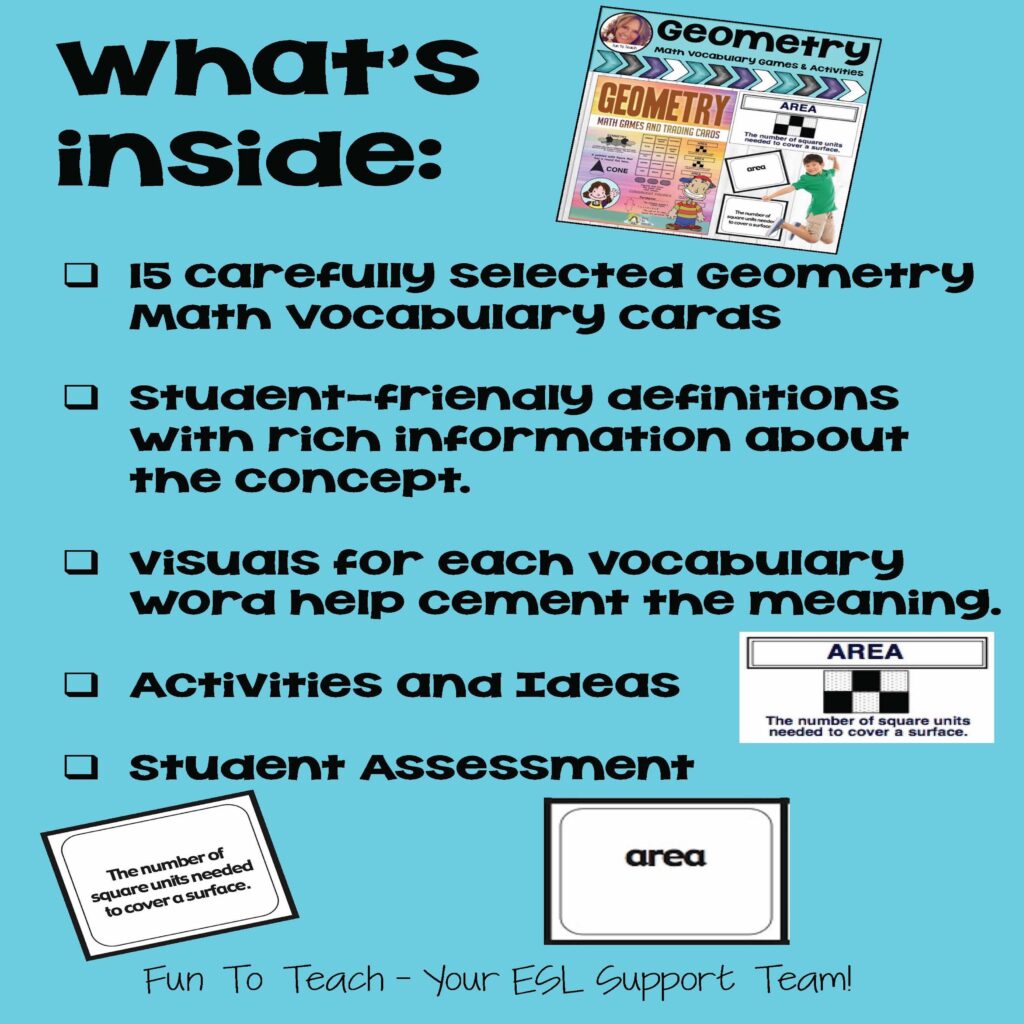Welcome back to school! Let’s talk about the importance of Math Vocabulary! If you are starting to fill in your Math pacing guide for the year you realize that math stands as a cornerstone subject that lays the foundation for:
- critical thinking
- problem-solving
- logical reasoning skills
Picture a classroom buzzing with curiosity, where young minds unravel the mysteries of numbers and equations. In this realm of mathematical exploration, one often overlooked gem plays a pivotal role: math vocabulary. 🧐🔢
Why Math Vocabulary Matters
Just as learning a new language broadens our communication abilities, understanding the words of Math empowers students to effectively communicate their mathematical thoughts and concepts.

It acts as a bridge between abstract mathematical ideas and tangible understanding. From “addition” to “subtraction,” “multiplication” to “division,” each term has its unique significance, and a rich vocabulary ensures that students grasp the nuances of these concepts.
Read the post on K-5 Math Overview
Unlocking the Magic of Mathematical Terms
Much like words are the building blocks of language, math vocabulary is the cornerstone of mathematical understanding. It’s the thread that weaves together abstract concepts and concrete comprehension.
From “sum” to “difference,” “factor” to “multiple,” each term holds a world of meaning, and fostering a rich math vocabulary equips students with the tools to decode this numeric language.

The teaching of Number language
🔤 Holistic Learning: I believe that teaching Math vocabulary should encompass a variety of math activities and games that seamlessly integrate vocabulary learning into the math curriculum. It ensures that students not only grasp concepts but also become fluent in the language that defines those concepts.
🎮 Engagement through Play
I like to use a collection of captivating math games that make vocabulary acquisition an enjoyable adventure. By merging learning with play, games keep students engaged while deepening their understanding of math terms.
🌍 Inclusivity for ESL Learners
We all have a growing number of English as a Second Language (ESL) students in our classrooms. I recommend activities that can act as a bridge between language barriers and mathematical comprehension. The interactive nature of the games and activities fosters understanding regardless of language proficiency.

🤝 Collaborative Exploration
Many language activities encourage peer collaboration, cultivating an environment where students discuss and articulate mathematical ideas using vocabulary. This interaction further reinforces vocabulary retention and application.
🚀 Skill Transference
I like to use games and activities that don’t stop at vocabulary acquisition; I want games that emphasize the application of these terms in solving problems and real-life scenarios. This skill transference empowers students to wield their new vocabulary with confidence.
I have found that integrating daily lessons that include vocabulary into my teaching toolkit has revolutionized my math lessons. I incorporate these activities:
🚀warm-up exercises
🚀stations and centers
🚀morning work
🚀as part of homework assignments

By infusing Mathematical terminology seamlessly into the learning experience, we can nurture not only mathematical minds but also linguistic prowess.
Mathematical terms are the bridge that connects numerical theory with tangible understanding. Just as language shapes our expression, math terms shape the way we articulate mathematical concepts.
Introduce excitement, interaction, and enriched vocabulary into your math lessons. Embark on this journey to enhance your students’ mathematical language, and witness them decode the hidden messages within numbers with newfound fluency! 🌈🔣🧠
Have fun! 🙂




